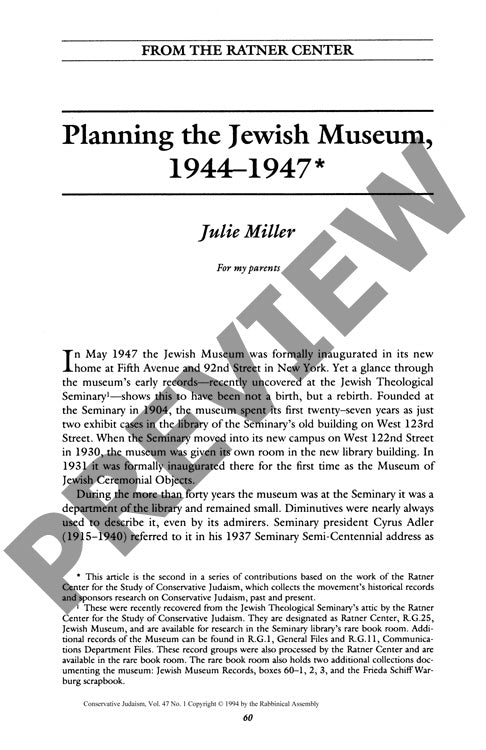Planning the Jewish Museum
Couldn't load pickup availability
A single donation in 1944 - Frieda Schiff Warburg's Fifth Avenue mansion - sparked an intense debate over the future of New York's Jewish Museum that would fundamentally reshape its identity. Drawing on newly discovered archival records from the Jewish Theological Seminary, including correspondence, meeting minutes, and institutional documents, this research traces how the museum transformed from a small Seminary department into an independent cultural institution between 1944-1947. The planning process surfaced three competing visions: a memorial to Holocaust-destroyed European Jewish communities, a platform for interfaith dialogue aligned with Seminary President Louis Finkelstein's initiatives, and a showcase for modern Jewish art championed by curator Stephen Kayser and scholars like Meyer Schapiro. While Finkelstein initially envisioned maintaining the museum under Seminary control, the institution gradually developed its own distinct character focused on modern art and aesthetics. When the museum opened its doors in May 1947, it had incorporated aspects of all three proposed missions but decisively oriented itself toward becoming a modern art institution - a trajectory that would define its future development. This evolution represented more than simple institutional growth; it marked a complete reimagining of the museum's purpose and place in American Jewish cultural life.

More Information
-
Physical Description
-
Publication Information
Published 1994
ISBN
-
Publication Credits
Julie Miller

